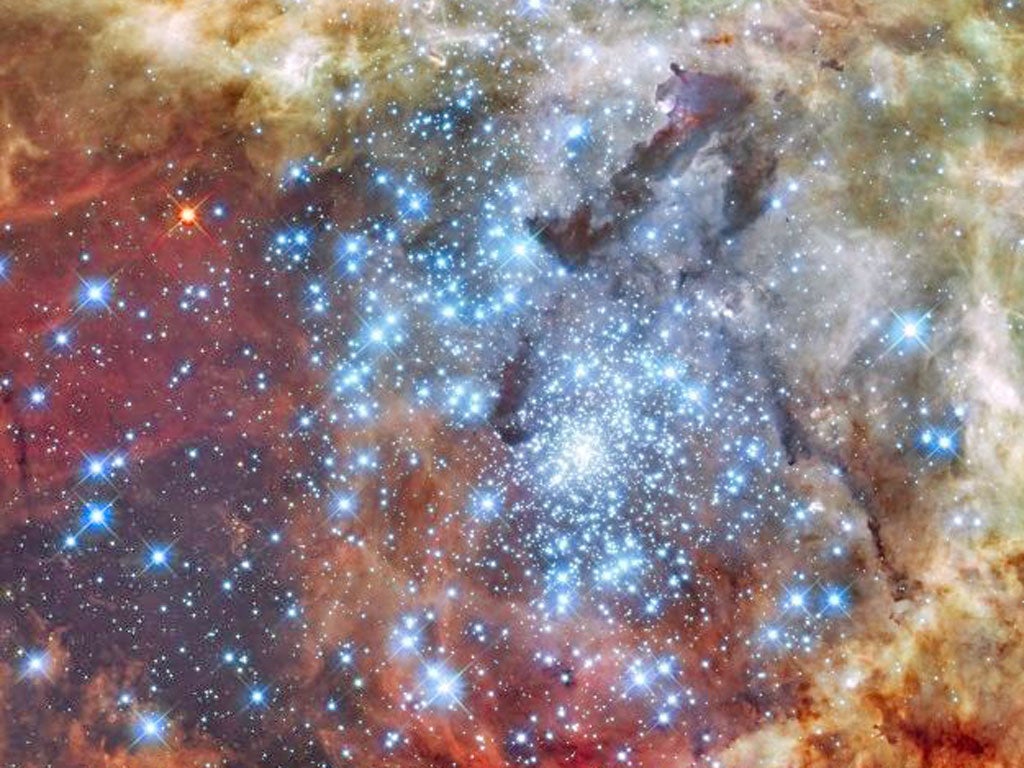
Astronomers at Nasa did a double take when they saw this image captured by the Hubble Space Telescope.
While to many it might look like a pretty, albeit dramatic, photograph showing a large collection of stars, to eagle-eyed astronomers the high incidence of "runaway" stars demanded closer inspection – and led to the revelation that what the Hubble had depicted was an image of two massive star clusters in the early stages of merging.
The two star clusters are about 170,000 light years away from Earth, in the Tarantula Nebula, otherwise known as 30 Doradus, which is in the Large Magellanic Cloud, a small galaxy that orbits the Milky Way.
Runaway stars move at high speed away from where they were born. They are usually in a spherical pattern but in this case they are distributed in an oval shape, suggesting large gravitational forces – exerted by the merging clusters – are at play.
Evidence of star clusters combining could help to explain the origin of some of the largest known clusters. Follow-up studies will also be hoping to use the findings as a demonstration of how stars formed in the young universe.
Join our commenting forum
Join thought-provoking conversations, follow other Independent readers and see their replies
Comments